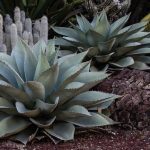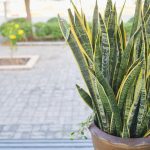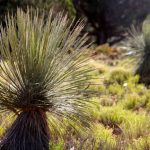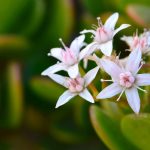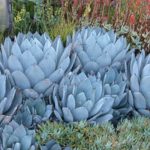Discover the wonders of Yucca aloifolia, also known as Spanish Bayonet. A beautiful landscaping gem with our guide to help you grow this stunning variety!
Cacti & Succulents
Learn About Growing Spanish Dagger Plants – Yucca Aloifolia
The Yucca aloifolia, commonly referred to as Spanish Bayonet or Dagger Plant, is a striking perennial shrub belonging to the Asparagaceae family. These slender-stemmed shrubs can reach heights of 10-15 feet, making them ideal for xeriscape gardens. The plant boasts robust, pointed leaves that can grow up to 2 feet long, with sharp ends that can puncture skin.
Known by various names, the Spanish Bayonet plant produces clusters of white flowers, blooming in spring and summer as tall spikes amid the foliage. Both the fruit and flowers of this plant are edible, with the flowers being best consumed after cooking.
Quick Care Guide
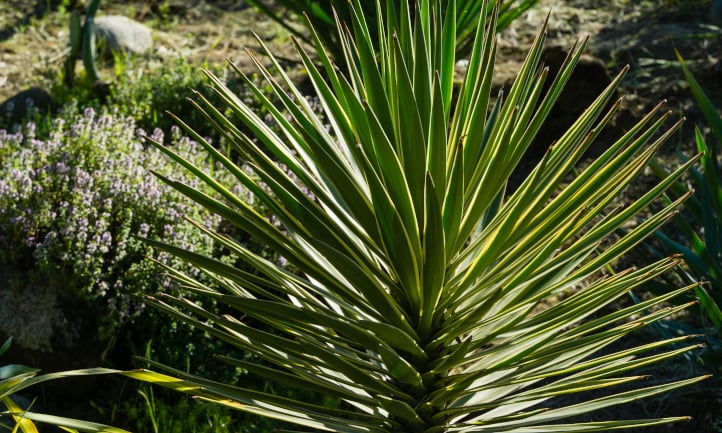

| Common Name | Spanish Bayonet, Dagger Plant, Aloe Yucca |
| Scientific Name | Yucca aloifolia |
| Family | Asparagaceae |
| Height & Spread | 10-15′ tall and 3-5′ wide |
| Light | Full sun |
| Soil | Well-draining cactus soil or potting soil with pumice |
| Water | Once per week, more often in hotter temperatures |
| Pests & Diseases | Scale, spider mites, and yucca moth larvae, leaf spot |
All About Yucca aloifolia: Spanish Bayonet


Yucca aloifolia, commonly known as Spanish Bayonet, Dagger Plant, Aloe Yucca, and Spanish Dagger, is part of the Asparagaceae family, which includes various flowering plants like asparagus, hostas, bluebells, spider and snake plants. Native to the Southern United States, this plant is prevalent in Southern Florida and Mexico, often found in coastal forests and sandy dunes.
For more information about the care required for these plants and their growth habits, see the sections detailing the yucca aloifolia plant growth habits and how to care for yucca dagger plants specifically.
Yucca plants thrive in arid gardens with sandy soils and excellent drainage, typical of their native range in USDA zones 8 to 11 where they return annually as hardy perennials. Adjust watering frequency based on temperature changes. Overwatering can lead to root rot, leaf discoloration, and plant death. This plant prefers sandy soils to avoid nutrient buildup, as it’s accustomed to the naturally nutrient-poor coastal soil.
Feeding these slow-growing plants with low-nitrogen fertilizer containing essential nutrients a couple of times a year is sufficient. Nitrogen-rich fertilizers can harm the plant, causing leaf damage. Yuccas are propagated mainly from seeds, best germinated at temperatures between 60-70°F, or root cuttings during late or early spring. Proper pruning is essential, especially considering the sharp spikes and allergic reactions the plant can cause.
When addressing potential issues with yucca plants, inadequate sunlight can lead to gradual decline, while overwatering can damage roots and discolor leaves. Pest issues may include spider mites, mealybugs, and aphids, which can be removed with water or gentle insecticidal soap. Diseases like brown spot or root rot can be prevented by ensuring well-draining soil and avoiding excessive watering to keep the plant healthy.


How to care for a yucca plant indoors?
For indoor yucca plants, water them every 5 to 7 days and place them in a spot with ample sunlight as they thrive in full sun year-round. Consider the lighting conditions before keeping them indoors.
Are Spanish daggers poisonous?
The Yucca aloifolia plant’s sap is mildly toxic, and its sharp leaf tips can cause severe punctures leading to allergic reactions. Ingesting the leaves may result in saponin toxicity.
What are the characteristics of a Spanish bayonet plant?
Spanish bayonet plants exhibit dark green thick leaves with pointed ends, growing up to 15 to 20 feet tall, often leaning to one side due to their weight.
What is the typical height of Spanish daggers?
Spanish daggers usually reach heights of 10 to 12 feet.
How long do yucca plants typically live?
In their natural habitat, yucca plants have a lifespan of over 5 years.
Can you prune a Spanish dagger plant?
Yes, you can trim a Spanish dagger plant. Refer to the Pruning section for detailed instructions on how to do it effectively.
Does a Spanish dagger plant require full sun?
Absolutely, Spanish dagger plants are drought-tolerant and need to be placed in a location with abundant sunlight.
What happens if you trim the top off a yucca plant?
Properly cutting the top off a yucca plant stimulates branching from the sides just below the cut, resulting in a bushier appearance.

